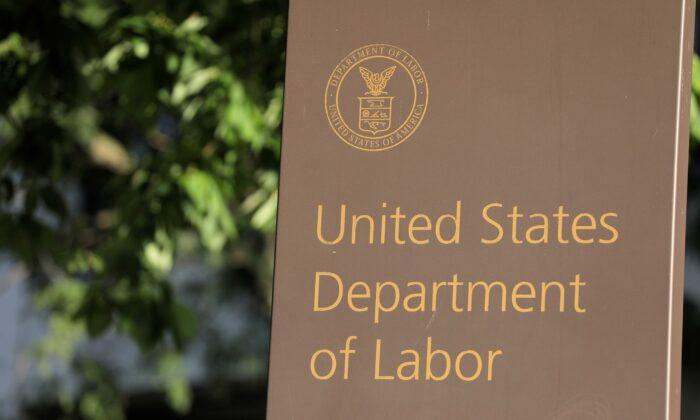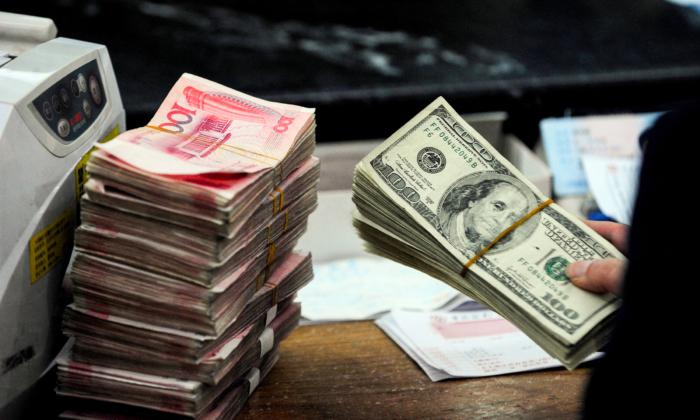Two important economic indicators that were released recently tell the same three-part story: The post-pandemic recovery continues to proceed nicely; the pace of growth is slowing, but that is to be expected; inflation shows no sign of abating.
The first of these indicators is the Labor Department’s employment report. It shows that unemployment has continued to decline.
The number of Americans unable to find work dropped in March by some 318,000 to 5.95 million, a 5.1 percent drop from February and a 9.0 percent drop from January.
As a percent of the available workforce, the unemployment rate fell to 3.6 percent, down from 3.8 percent in February and way below the 6.0 percent rate recorded this time last year. Unemployment has finally approached the pre-pandemic and near-record low of 3.5 percent.
Especially encouraging is the widespread nature of the gains.
Adult male unemployment fell to 3.4 percent in March from 3.5 percent in February. Adult women were doing even better, showing a rate of 3.3 percent in March.
Teen unemployment, at 10.0 percent, was down from 10.3 percent in February and down from the 12.7 percent a year ago.
Black unemployment came in at 6.2 percent of that workforce, a striking one-month improvement from February’s 6.6 percent rate and 9.5 percent a year ago.
The Hispanic unemployment rate was 4.2 percent in March, down slightly from 4.4 percent in February and more from 7.7 percent a year ago.
Asian unemployment at 2.8 percent was striking, down from 3.6 percent in February and 5.9 percent a year ago.
Less encouraging is Labor Department’s employer survey. It shows that the country created some 431,000 new jobs in March, a good showing compared with the long historical sweep but considerably less impressive when compared to the past 12 months, which showed an average monthly job gain of almost 600,000.
That the country is leaving the post-pandemic boom behind is still more evident in the industry detail. Half the jobs slowdown between February and March occurred in retail trade and the leisure and hospitality sector. These two areas have been leaders in the recovery.
It’s also noteworthy that temporary help showed a significant slowdown in growth, while transportation and warehousing suffered small outright declines in employment between February and March.

Wages continued to grow, which would have been encouraging, except that the increase failed to keep up with inflation. Hourly wages rose 3.7 percent from a year ago, and the weekly figure, which accounts for overtime, rose 4.6 percent.
Though strong by the standards of the past decade, either falls far short of the nation’s 7 percent to 8 percent inflation. Working men and women are running to catch up, and neither has a surplus with which to propel additional real spending and economic activity.
The other revealing release comes from the Institute of Supply Management (ISM), a private industry group. The ISM weighs firms reporting gains against those reporting losses, and so an index measure of 50 marks the difference between growth and decline.
The ISM’s overall index for economic activity stood at 57.1 for March. That is well above 50, indicating continued recovery, but it is nonetheless down sharply from February’s index of 59.0 and the 60 that the index registered late last year.
The developing slowdown has eased some supply chain problems. Inventories in March were more robust, and backlogs were much less troublesome.
Otherwise, the news points to a more constrained economic environment. That is especially evident in the forward-looking index for new orders, which came in at 53.8 in March, down sharply from February’s index of 61.7. The same could be said about production, which at 54.5 for March is well below February’s 58.5.
Most troubling is the inflation news. The index for prices to manufacturers stood at a very high 87.1 in March, up from an also high 68.2 last December.
None of this should be a surprise. Inflation has been building steadily for months. As for the slowing in the recovery, economies typically rebound sharply from artificial constraints, as the lockdowns and quarantines were, but once they catch up to their past trends, they almost always slow. That’s what is happening in the United States now.
When that catch-up is complete, likely in the second half of this year, the pace of growth in output and employment should resume their much slower trend rate.





